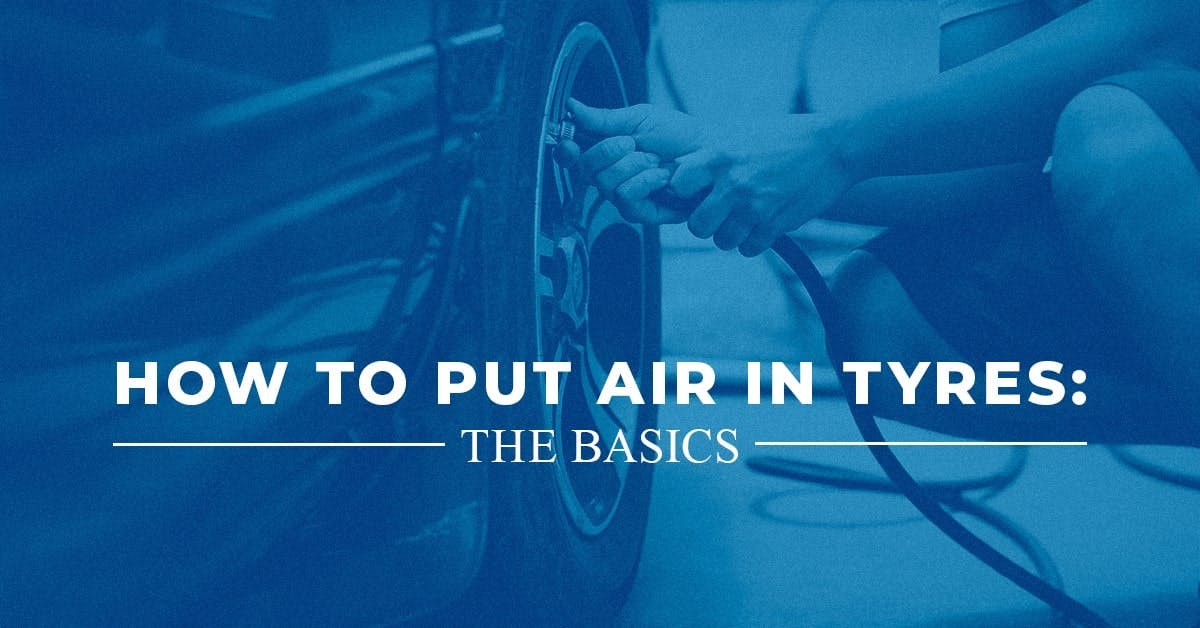Concerned about inflating your tyres? When your tyre pressure is at the right level, you will notice a positive difference in your vehicle’s performance. If your tyres are inflated incorrectly, however, your tyres may wear prematurely.
In this short article, we tell you the basic steps you need to know about if you want to inflate your tyres. Read on, and you’ll be a pro in no time!
Check Your Tyre Pressure
As of 2014, all new passenger vehicles sold in the EU have to be equipped with a tyre pressure monitoring system - or TPMS for short. This system monitors your tyre pressure and works with your vehicle’s ECU - if your tyre pressure changes or falls, a TPMS warning light will show on your dashboard.
If you are aware that your tyre pressure needs some attention, you will need to find out what the recommended tyre pressure is for your vehicle. You can find this information in your vehicle’s handbook, on the inside of the door frame on the driver’s side, or on the back of your vehicle’s fuel filler flap.
You should know that one tyre pressure does not fit all - there can be differences depending on the type of tyres you use. For instance, differing pressures may be required for a soft tyre and a hard tyre.
If you notice this warning light whilst driving, you should pull your car over, and perform a manual check to see if your tyre pressure aligns with the recommended PSI stated in the owner’s manual for your vehicle.
Your vehicle may not have one of these lights, in which case you will need to routinely perform a manual tyre pressure check using a tyre pressure gauge. You should be able to buy a pressure gauge wherever you buy your automotive products.
Without a pressure gauge in your possession, you will have to take your vehicle to a garage to have your tyre pressure checked. In relation to tyre pressure, it is important that you have the right size of tyres for your vehicle in the first place, so that your car can run with less risk of tyre blowout.
Inflate Your Tyres
Now that you know the desired tyre pressure for your vehicle, you can then take your car to your local petrol station to begin the process of inflating your tyres. If you have to travel to the petrol station, try and make this journey as short as possible – the longer the drive, the more your tyres will heat up, which can give you an inaccurate pressure reading as the pressure inside your tyres will expand as the tyre warms up.
You should always try and inflate your tyres when they are cold – if you have driven for more than a couple of miles, then you need to wait until the tyres have a chance to cool down before you try and inflate or deflate them - ideally, you would give them 2 hours to do so.
Once your tyres are cool, you can locate the tyre inflation pump at the petrol station. Place the air pump into the tyre valve. The tyre inflation gauge should display the current tyre pressure, so you will know whether more air needs to be added, or let out, to reach the desired PSI - this stands for pounds per square inch, and refers to the correct pressure your tyre needs to be at to optimise your vehicle’s performance. To avoid overfilling your tyre, you should add air in short bursts.
Whilst you can check your tyre pressure yourself at a petrol station, it is important to note that these tyre inflation gauges aren’t always reliable, as they may not be calibrated properly. To be on the safe side, it is extremely important that you have your tyre pressure checked by a professional mechanic from time to time, to make sure that everything is as it should be.
Reset Tyre Pressure Warning System
Remember, you will need to reset the tyre pressure warning system once the process is complete. All brands have different ways of resetting - some have an obvious reset button to press, whilst yours may be hidden in a menu somewhere in the vehicle’s user interface software.
It's best to refer to your owner’s manual to find out where your vehicle’s reset button is. It is important to note that your vehicle may need to be taken to a main dealer so that they can reset your warning system for you - particularly if your tyres have been damaged or the tyre pressure has dropped below a certain threshold. The main dealer can then perform a software update and reset for you.
If you're fed up with constantly putting air into your tyres, it might be time to replace them. Compare tyre prices on BookMyGarage by entering your reg and postcode and get your car running as safely and smoothly as possible in no time.
Book online today!






